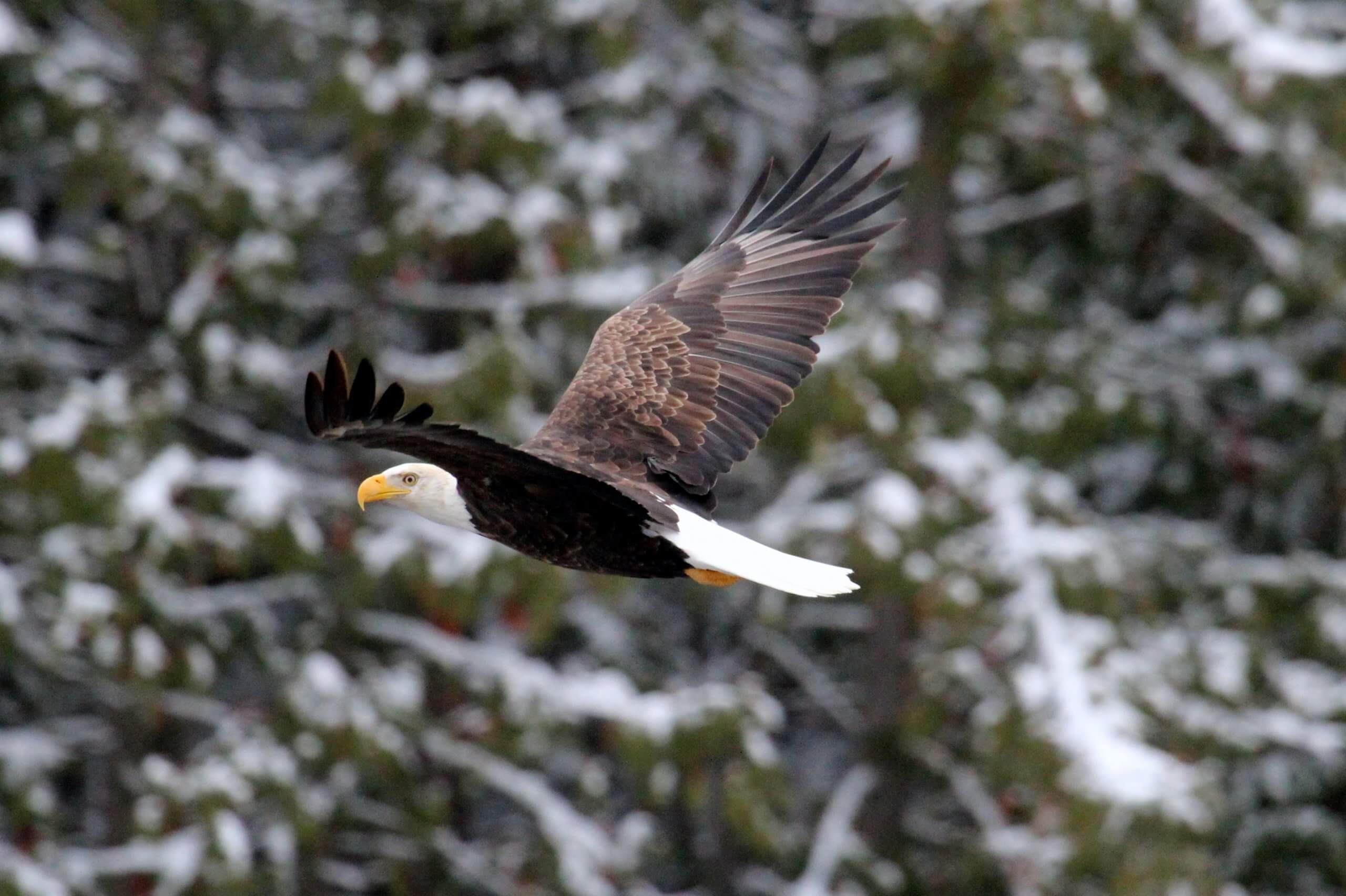Idaho is a bird watcher’s wonderland. Our landscapes provide migration routes and year-round habitat for over 400 species of birds. Whether you’re a casual birder or a dedicated ornithologist adding to your life list, Idaho’s vast swaths of untouched wilderness are guaranteed to delight.
Strap on your binoculars and check out these spectacular locations throughout the Gem State.
Northern Idaho
Kootenai National Wildlife Refuge

Outside the town of Bonners Ferry lies the Kootenai National Wildlife Refuge, a 2,700-acre park in the shadow of the Selkirk Mountains. Designated as a refuge for migrating waterfowl, birders have the opportunity to catch a glimpse of some of the 220 species that utilize the area. Look for the tiny Calliope Hummingbird, the Northern Shoveler, and the Rough-legged Hawk.
Wolf Lodge Bay

Located on the west end of Lake Coeur d’Alene, Wolf Lodge Bay is well known as a migration stop for Bald Eagles in late December. This easily accessible spot is hopping any time of year. Keep an eye out for the American Dipper, the Common Loon, and the Clark’s Grebe. Hike the 2.5-mile Mineral Ridge Trail for excellent views.
Central Idaho
Lewis and Clark Scenic Byway

Follow in the footsteps of the Lewis & Clark expedition while searching for birds such as the Blue Grouse, the Great Gray Owl, and the Willamson’s Sap. This 39-mile scenic byway begins near Salmon and is open during the summer and early fall. Come prepared; the gravel road is passable for passenger cars but does not have any services. Bring food, water, and your binoculars!
Harriman State Park
Situated on the Henry’s Fork of the Snake River near Island Park, Harriman State Park offers a variety of terrain for exploring. The park is open year around and hosts a large population of Trumpeter Swans during the winter. Hiking is the best way to see the park, which is crisscrossed with 20 miles of trails. Keep an eye out for the Double-Crested Cormorant, the Lincoln’s Sparrow, and the Gray Jay.
Southern Idaho
Morley Nelson Snake River Birds of Prey National Conservation Area

The Morley Nelson Snake River Birds of Prey National Conservation Area encompasses 485,000 acres and has North America’s highest density of nesting raptors. Grab a Visitors Guide to help you navigate this diverse site. Look for the Prairie Falcon, the Long-Billed Curlew, and the Black-Crowned Night Heron. Camping is available within the National Conservation Area.
Bear Lake National Wildlife Refuge
In the far southeast corner of Idaho lies the Bear Lake National Wildlife Refuge, an 18,000-acre wetland prime for birding. Drive the Wildlife Observation Route to see birds such as the Cattle Egret, the Loggerhead Shrike, and the Caspian Tern.

Explore the Idaho Birding Trail
For the adventure of a lifetime, explore a section of the Idaho Birding Trail. The Idaho Birding Trail stretches over 2,000 miles and encompasses 175 birding sites. Idaho Fish and Game breaks the trail down into regions, and each region would make for an excellent trip. Twenty-two sites are marked as “Blue Ribbon” sites, designating them as the best of the best in Idaho.
Tips for Starting a Life List
Don’t have a birding life list yet? A trip to Idaho is the perfect time to start. Challenge yourself to identify 30 bird species and see where it takes you.
Birding requires nothing more than a pair of binoculars and a free phone app or two. To get started check out the Audubon Society’s article “How to Begin Birding.”
For Identification: Merlin Bird ID, Audubon Bird Guide
For Creating a Life List: eBird by Cornell Lab of Ornithology
Birding Books: Peterson Field Guide to Birds of Western North America, The Sibley Guide to Birds
Feature Image is credited to the Bureau of Land Management.
Sara Sheehy seeks adventure in the mountains of Idaho and beyond. Follow her on Instagram at @sarasheehy.
Published on May 18, 2017

